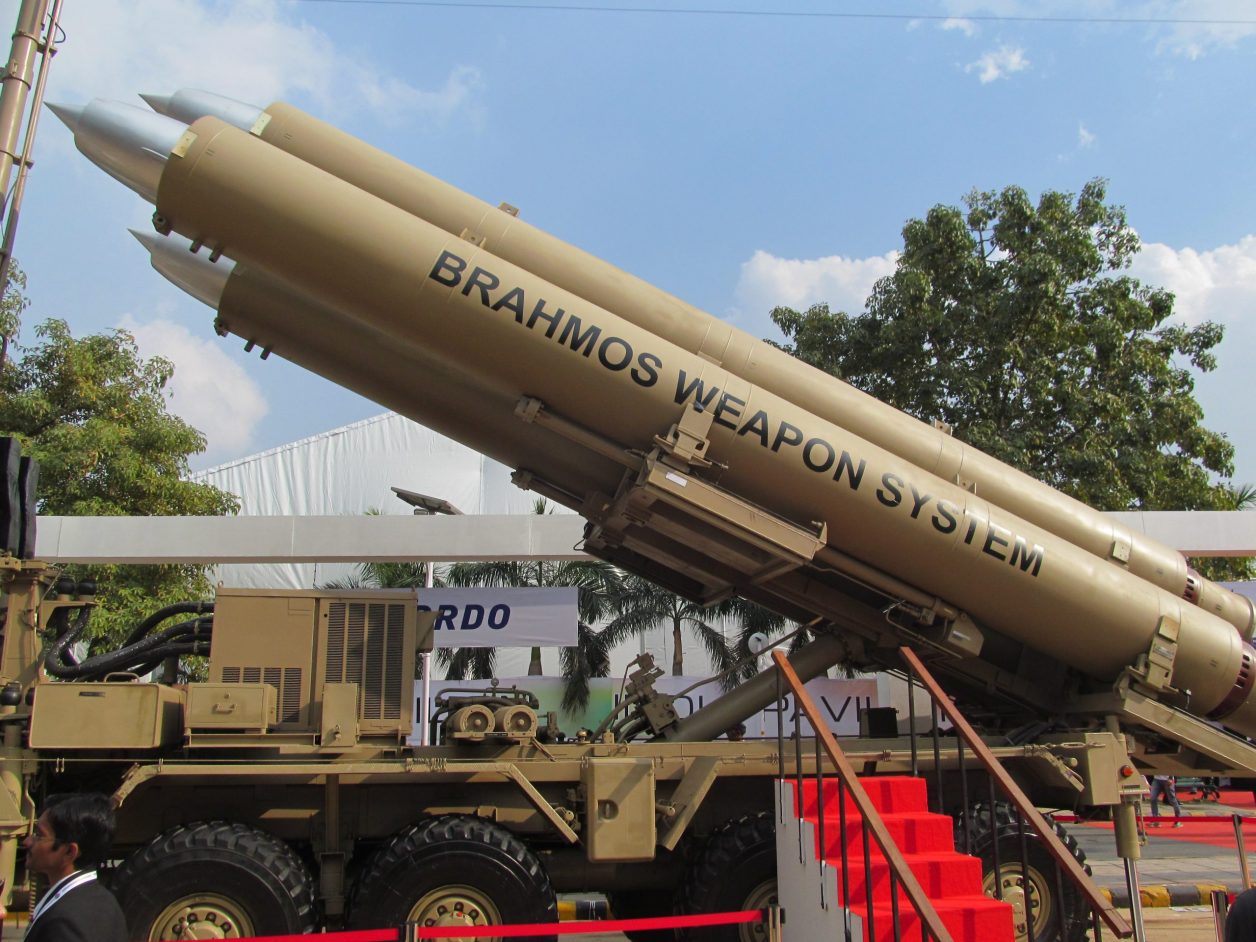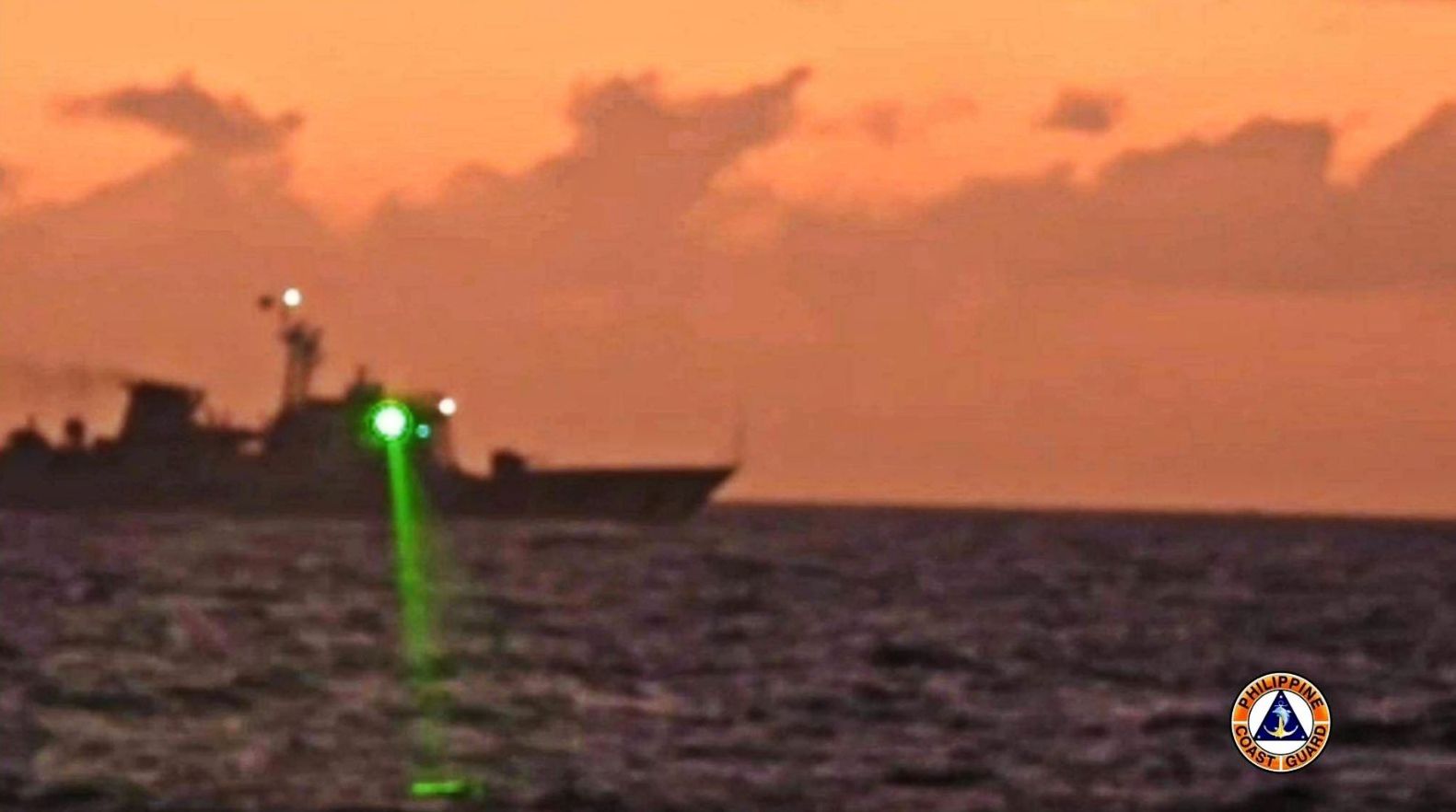The Philippines is one step closer to deploying the deadly Indio-Russian BrahMos anti-ship cruise missiles it purchased last year amid escalating tensions with China in the disputed South China Sea (SCS).
On February 17, a batch of twenty-one Philippines marines completed hands-on training focused on the operation and maintenance of the newly-purchased BrahMos anti-ship supersonic cruise missile. The training took place between January 23 and February 11, 2023.
The batch of personnel was presented with interim missile badges and pins by the Chief of Naval Staff of the Indian Navy, Admiral Radhakrishnan Hari Kumar, at the valedictory ceremony for the Operator Training of the Shore Based Anti-Ship Missile System.
The Philippines signed a $375 million contract with India in January 2022 for the supply of three BrahMos ground-based anti-ship missile systems. This was the first-ever export sale of this lethal supersonic cruise missile for India, and for the Philippines, it was seen as a decision to deter China in the SCS.
In April 2022, Manila carried out a provisional activation of the Philippine Marine Corps (PMC) Shore Based Anti-Ship Missile (SBASM) battalion.
Indian Navy Chief of Naval Staff, Admiral Radhakrishnan Hari Kumar personally awarded the ?? marines, who will be the first operators of BrahMos outside of ??. @ThingsNavy @AdithyaKM_ (? PMC) pic.twitter.com/iR7lzFpsbT
— Aaron-Matthew IL (@Aaron_MatthewIL) February 17, 2023
Months after the deal was signed, media reports indicated that Filipino personnel would start arriving in India in July-August to receive training in subsequent months. At the time, it was also widely reported that Indo-Russian joint venture company BrahMos Aerospace was helping Manila set up the bases for the system’s deployment.
The Philippines will soon be able to deploy this missile for operational duty, the first country to do so after India. Last month, reports in Indian media stated that the South East Asian country would receive the first of three batteries of the BrahMos missile this year.

A missile battery typically consists of three autonomous mobile launchers with two or three missile tubes each, along with the tracking systems.
The acquisition has been hailed as historic for the country as BrahMos is one of the few cruise missiles in the world that can travel at high supersonic speeds (around Mach 2.8).
The missile is highly challenging to intercept owing to its speed and low radar signature. It can be launched from a ship, aircraft, submarine, or land and can carry warheads weighing up to 200 to 300 kilograms.
Officials in Manila see it as a boost to the country’s capability to protect its maritime borders. The missile is believed to support the Philippines Navy’s surface asset operations in patrolling Philippine waters while deterring adversaries like China, which regularly intimidates the Filipino Coast Guard and Navy in the contentious region.
Philippines To Deter China With BrahMos?
The deployment of BrahMos would be very significant for the country, which remains embroiled in tensions with the People’s Republic of China (PRC). Last week, the Philippines Coast Guard accused China of firing a military-grade laser at them which elicited international concerns.
China has since denied these accusations. It asserted that the Nansha Islands, including the Ren’ai Reef (where the incident allegedly occurred), were Chinese sovereign territory.
On February 15, the Chinese Foreign Ministry spokesperson Wang Wenbin said, “the Chinese Coast Guard did not direct lasers at the Philippine crew, and the hand-held equipment did not inflict damage on anything or anyone on the vessel, and the Philippines’ allegation does not reflect the truth.”
However, tensions continue to run high between the two countries, and deploying BrahMos anti-ship cruise missiles is expected to deter China’s alleged aggression and intimidation in the region.

At the time of activating the battalion in April last year, PMC said that the missile system will address the military weaknesses and vulnerability of the country in the realm of sea control, anti-access/area-denial (A2/AD), and coastal and island defense operations as guided by the PN Active Archipelagic Defense Strategy and PMC Archipelagic Coastal Defense Concept.
Military experts in New Delhi and Manila have also asserted that the BrahMos will substantially boost the Philippines’ defense capabilities by allowing it to hit seaborne or surface targets far from its borders. The argument is primarily based on the range of this missile, which is about 290 kilometers.
As Defense Secretary Delfin Lorenzana said, “As the world’s fastest supersonic cruise missiles, the BrahMos missiles will provide deterrence against any attempt to undermine our sovereignty and sovereign rights, especially in the West Philippine Sea.”
- Contact the author at sakshi.tiwari9555 (at) gmail.com
- Follow EurAsian Times on Google News




